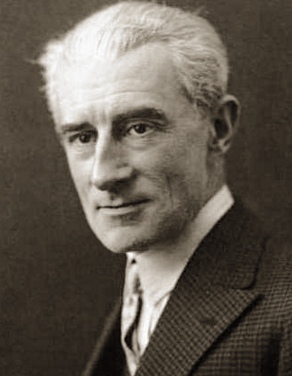On this date in 1875, Joseph Maurice Ravel, composer, pianist and conductor, was born in the Basque town of Ciboure, France. His father, Pierre-Joseph Ravel, was an educated engineer, inventor and manufacturer. His mother, Marie (née Delouart) Ravel, was born to an unwed mother and was barely literate. She was also a freethinker, a trait inherited by Maurice, who was always politically and socially progressive as an adult, according to musicologist and Ravel scholar Arbie Orenstein.
He was admitted to France’s premier music academy, the Conservatoire de Paris, winning first prize in the school’s piano competition in 1891. He was expelled in 1895 due to differences with faculty conservatives but was readmitted two years later and studied composition with Gabriel Fauré. He was later forced out again after clashing with Conservatoire Director Théodore Dubois, who deplored Ravel’s musical and political progressivism.
Making his way as an orchestral arranger and composer, he was often associated with his contemporary Claude Debussy as an impressionist, though neither liked the term. He liked to experiment with musical form, as is evident in “Boléro” (1928), his best-known work. “Boléro” is a one-movement orchestral piece originally composed as a ballet that repeats its main melody 18 times by solo or combinations of instruments. The duration varies depending on the tempo but typically is about 16 minutes. When Toscanini conducted it faster, Ravel objected, resulting in hard feelings. “When I play it at your tempo, it is not effective,” Toscanini said. To which Ravel supposedly replied, “Then do not play it.”
Ravel, a master of orchestration, worked at a slower pace than many of his contemporaries. Among his 85 works, many incomplete, are pieces for piano, chamber music, two piano concertos, ballet music, two operas and eight song cycles. He wrote no symphonies or church music. He was among the first to realize the potential of recording music. According to a 1914 article in the French magazine Comoedia illustré, there’s “a notable absence of religious forms or references” in his works. “His habitual inspiration came from nature, from fairy tales and folk songs, and from classical and Oriental legends. Nor was he always sympathetic to the religious works of other composers.”
Although he never married and was childless, Ravel liked children and wrote piano music they could play and reflected their world. He wrote “Ma Mère l’Oye” (Mother Goose), subtitled “cinq pièces enfantines” in 1910 as a duet and dedicated it to his students, Mimie Godebska and her brother Jean. “It was he who made me read the Fioretti (Little Flowers) of St. Francis of Assisi. Although he was a confirmed atheist, he adored this book, and I was so amazed by it that I used to imagine it being set to music — by Ravel,” wrote Mimie Godebska Blacque-Belair in 1938.
Ravel started to suffer from neurological impairment in the early 1930s, which affected his piano playing, touring and conducting. The cause was never determined but may have been dementia, Alzheimer’s or Creutzfeldt–Jakob disease. He died at age 62 and was buried next to his parents with no religious ceremony. (D. 1937)
PHOTO: Ravel at age 50.


